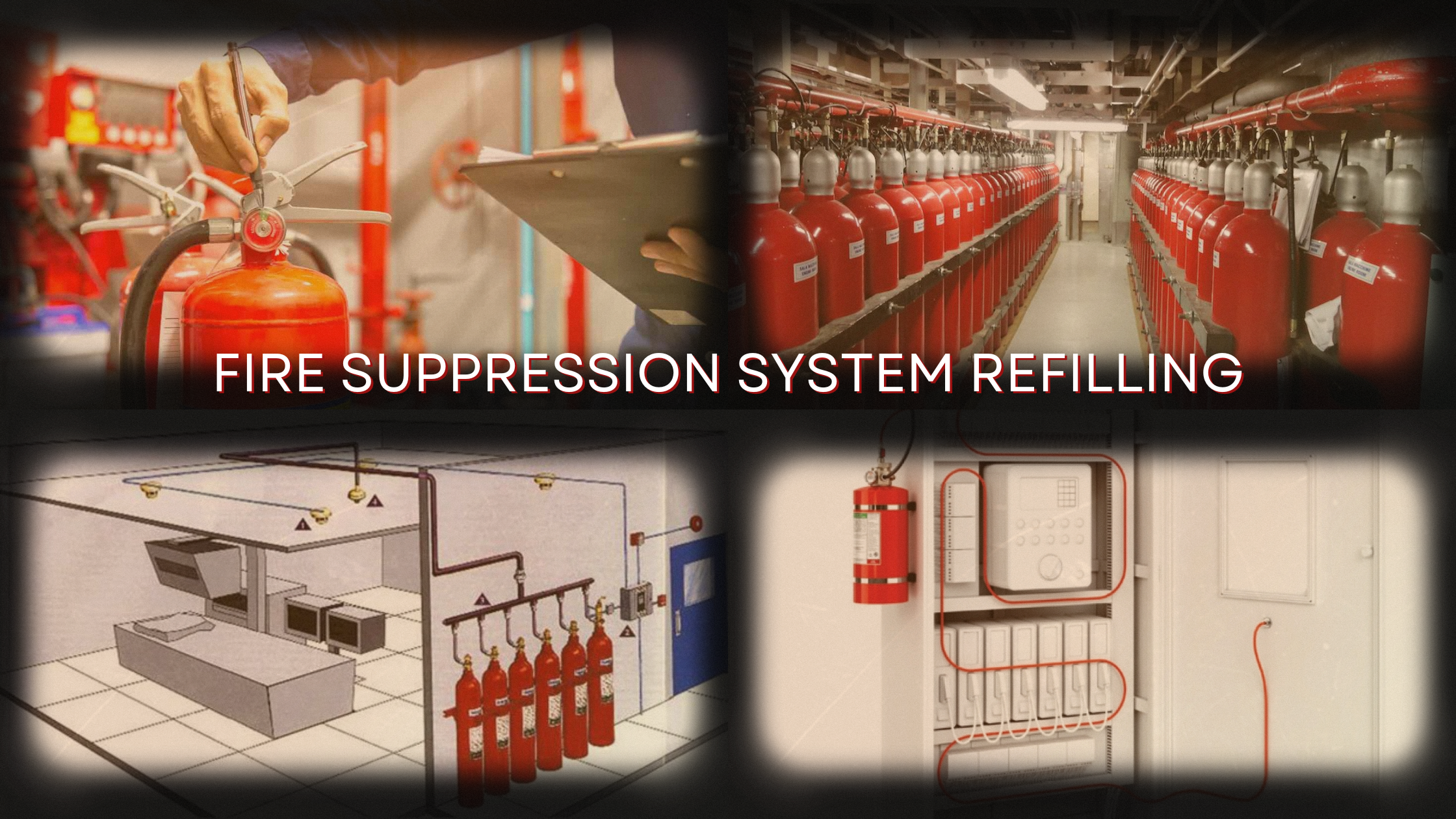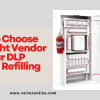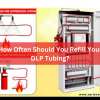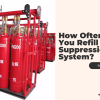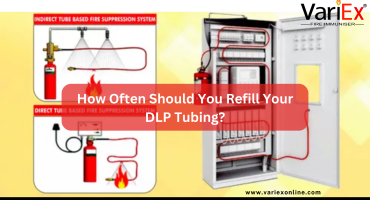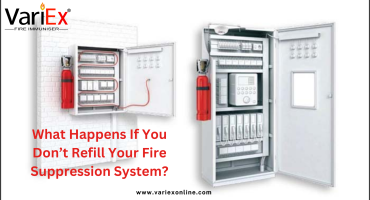![]()
Fire Immuniser
+91-7829629111
Email: info@variex.in
Varistor Technologies Pvt. Ltd.
Block-1, First Floor, Ardente Office One, Hoodi Circle, ITPL Main Road, Bengaluru, Karnataka 560048, IN
NFPA 17 & 17A Fire Suppression System Refilling Standards
NFPA 17 & 17A Fire Suppression System Refilling Standards
Fire suppression systems are crucial for protecting lives and property from fire hazards. The National Fire Protection Association (NFPA) 17 and 17A set the standards for dry chemical and wet chemical fire suppression systems, respectively. Proper refilling and maintenance of these systems are essential to ensure their effectiveness in an emergency.
This guide will walk you through NFPA 17 and 17A fire suppression system refilling standards, compliance requirements, and best practices to help businesses stay prepared and compliant.
What Are NFPA 17 & 17A Standards?
The NFPA 17 and NFPA 17A standards are designed to regulate the installation, inspection, maintenance, and refilling of fire suppression systems.
- NFPA 17: Covers dry chemical fire suppression systems used in industrial, commercial, and hazardous environments.
- NFPA 17A: Covers wet chemical fire suppression systems mainly used in commercial kitchens.
Both standards outline strict guidelines for the refilling and servicing of fire suppression systems to ensure reliability.
When Should a Fire Suppression System Be Refilled?
According to NFPA 17 & 17A, fire suppression system refilling is required in the following cases:
- After System Discharge – If a fire suppression system is activated, it must be refilled before it can be used again.
- During Routine Maintenance – Periodic servicing includes checking agent levels and refilling if necessary.
- If a Leak or Damage is Detected – Any leaks, clogs, or damaged components require immediate refilling and repair.
- When the Expiration Date is Reached – Suppression agents degrade over time and need periodic refilling.
NFPA 17 & 17A Fire Suppression System Refilling Standards
1. Dry Chemical Fire Suppression Systems (NFPA 17)
NFPA 17 specifies that dry chemical suppression systems should be inspected and serviced semi-annually. The refilling process includes:
- Checking for agent leakage or depletion
- Ensuring proper pressure in the system
- Refilling dry chemical agent (sodium bicarbonate, potassium bicarbonate, or monoammonium phosphate)
- Replacing faulty discharge nozzles, piping, or seals
- Conducting a system re-test after refilling
2. Wet Chemical Fire Suppression Systems (NFPA 17A)
Wet chemical systems are commonly used in commercial kitchens and must be inspected every six months. Refilling involves:
- Ensuring the correct amount of wet chemical agent is present
- Checking for clogged nozzles or faulty detectors
- Refilling the agent and pressurizing the system
- Conducting a function test after refilling
3. Compliance and Documentation
Both NFPA 17 and 17A require businesses to maintain detailed service records, including:
- Date of refilling
- Type and amount of suppression agent used
- Name of the service provider
- System test results
Failure to maintain records can result in fines and compliance issues.
Table: NFPA 17 & 17A Refilling Standards Summary
| Standard | Type of System | Inspection Frequency | Refilling Triggers | Key Requirements |
|---|---|---|---|---|
| NFPA 17 | Dry Chemical | Every 6 months | After discharge, leaks, low agent levels, or expiration | Check agent levels, refill dry chemical, inspect nozzles and piping |
| NFPA 17A | Wet Chemical | Every 6 months | After discharge, contamination, clogged nozzles, or low pressure | Refill wet chemical agent, test pressure levels, clean nozzles |
Step-by-Step Fire Suppression System Refilling Process
1. Inspection & Assessment
- Conduct a visual inspection of the suppression system.
- Check for any leaks, corrosion, or physical damage.
- Verify that system components are functioning correctly.
2. Discharge & Cleaning
- If required, discharge the remaining suppression agent.
- Clean the suppression system components.
3. Refilling the System
- Refill with the appropriate fire suppression agent (dry chemical or wet chemical).
- Ensure that the correct concentration and volume are used.
4. Re-pressurization & Testing
- Pressurize the system according to manufacturer and NFPA specifications.
- Conduct a functionality test to verify the system operates correctly.
5. Documentation & Certification
- Log the date, service details, and technician information.
- Provide the customer with a service certificate to ensure compliance.
Importance of Hiring a Certified Fire Suppression Service Provider
Hiring a licensed and certified fire suppression system technician ensures:
✅ Compliance with NFPA 17 & 17A regulations
✅ Proper handling and refilling of suppression agents
✅ Safety for employees and property
✅ Avoidance of fines due to non-compliance
Always choose a reputable fire suppression company with trained professionals.
Common Challenges in Fire Suppression System Refilling
Refilling fire suppression systems can present challenges, such as:
🔴 Incorrect agent refill – Using the wrong suppression agent can render the system ineffective.
🔴 Clogged or faulty nozzles – Blocked nozzles prevent proper agent discharge.
🔴 Pressure loss – An improperly pressurized system won’t activate correctly in a fire.
🔴 Failure to test the system – A refilled system must be tested to ensure it functions properly.
Conclusion
Proper refilling of fire suppression systems in compliance with NFPA 17 & 17A is essential for safety and legal compliance. Regular inspections, timely refilling, and working with a certified fire suppression service provider can help prevent fires and protect property.
By staying compliant with NFPA fire suppression system refilling standards, businesses can ensure their fire safety systems work efficiently in case of an emergency.
Frequently Asked Questions
Fire suppression systems should be refilled after discharge and inspected every six months, per NFPA 17 & 17A standards.
No, fire suppression systems should be refilled by a certified technician to ensure compliance with NFPA regulations.
An empty system won’t activate during a fire, increasing the risk of property damage and safety violations. Immediate refilling is required.
Look for low agent levels, leaks, pressure loss, or system discharge as signs that refilling is needed.
The cost varies depending on the type of system, agent used, and service provider, but it typically ranges from $200 to $800 per system.
Final Say
At VariEx.in and VariexOnline.com, we specialize in supplying and installing top-quality fire fighting systems and equipment. From fire extinguishers to advanced suppression systems, we offer comprehensive solutions tailored to your needs. Our experienced team ensures precise installation and maintenance for optimal safety.
Trust VariEx for reliable fire protection. Contact us online or call 7829629111 to learn more.
We specialize in manufacturing, supplying, and distributing a comprehensive range of fire fighting equipment, including state-of-the-art fire extinguishers. Read our most searched blogs and find interesting information on topics such as how to use a fire extinguisher, how to calculate fire fighting water tank capacity, fire extinguisher refilling, obtaining a Fire NOC, understanding fire fighting systems, types of fire protection systems, the fire hydrant system, and the fire sprinkler system. These resources provide essential knowledge for ensuring safety and compliance with fire safety regulations. Additionally, you can explore guides on the maintenance of fire protection equipment, the latest advancements in fire safety technology, and best practices for fire risk assessment and management.
Our expertise extends to fire alarm systems, fire hydrant systems, and fire suppression systems, including fire sprinklers. Each product meets rigorous international standards for reliability and performance, ensuring effective fire safety products tailored to diverse applications and industries. Additionally, we are providing Fire Extinguisher Refilling and AMC services to ensure ongoing maintenance and operational readiness of fire safety equipment.
"WHAT YOU CAN READ NEXT"
 Read more +24 November 2023 in Fire Extinguisher
Read more +24 November 2023 in Fire ExtinguisherWhat types of fire extinguishers are available for different fire classes?
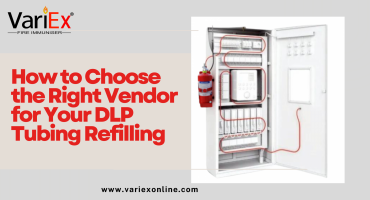 Read more +11 April 2025 in Fire Suppression
Read more +11 April 2025 in Fire Suppression

